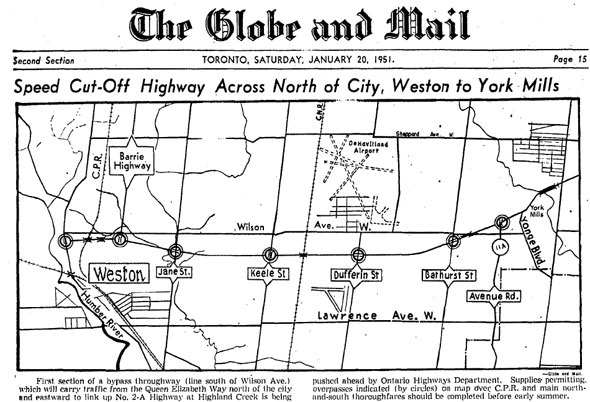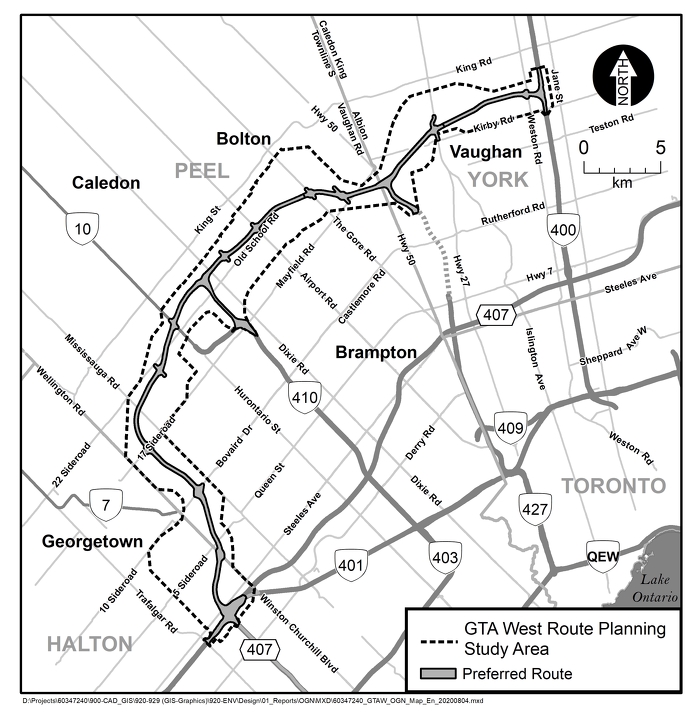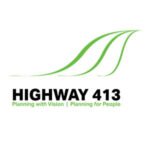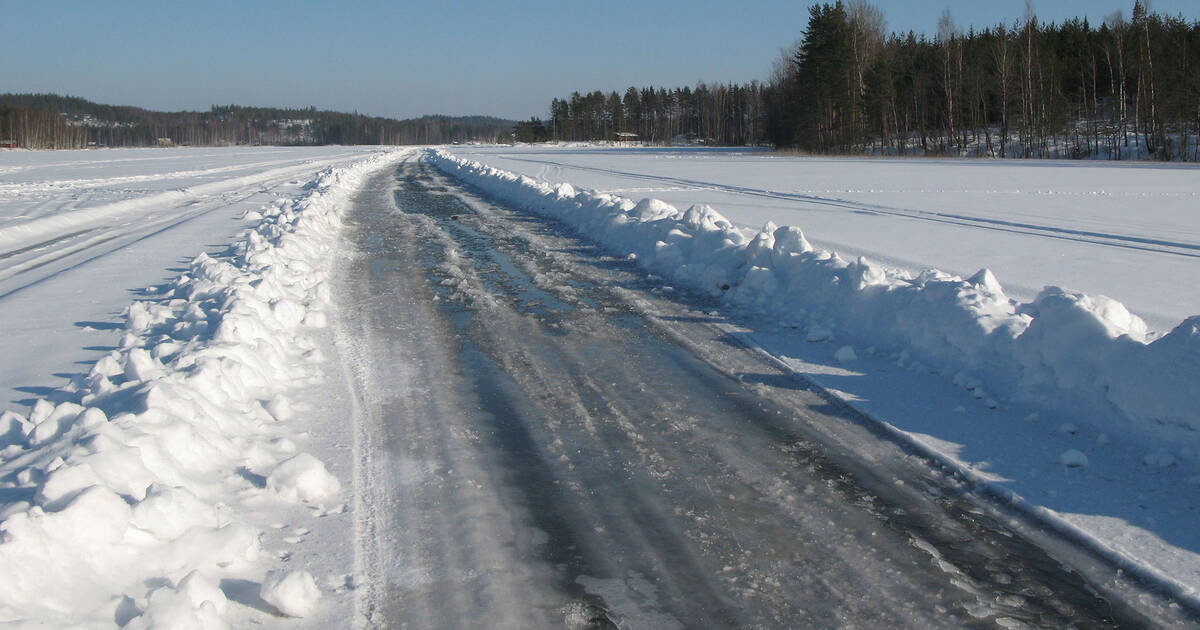When the Toronto portion of the 401
opened in 1956, then called the “Toronto Bypass” as it was an alternative to Highway 2 which ran through the centre of the city, farmland around here was just beginning to be urbanized. Originally just two lanes in each direction, the 401 passed just south of the Bathurst St. and Wilson Ave. intersection.
The Toronto Archives’
online aerial photograph collection reveals the story of how quickly Toronto expanded. In 1947, Bathurst and Wilson was rural, with just a scattering of residential houses and faint traces in the landscape of the subdivisions that were being prepared, some that would eventually be home to part of Toronto’s Jewish community.
Three years later, as 401 planning was well underway, the area was a patchwork of brand-new housing tracts and streets waiting for houses, some where the 401 would be built just a few years later.
Pull out your phone and type Carhartt St. into a map app. This tiny, dead-end street was once an on- and off-ramp for the eastbound 401, in addition to the on-ramp on Bathurst that still exists today. Highway 401 traffic was funnelled along adjacent Marquette Ave., a residential street.
Similarly, on the north side, wee Brightwood St. was the on- and off-ramp for the westbound 401, funneling people up to Wilson. People actually lived on both 401 approaches, unbelievable today, but it’s telling how tranquil the highway was originally imagined.
However tame it was when first opened, it congested quickly and by 1964 construction was underway for the collector lanes. The aerial photos show wide swaths cleared out, as if a giant eraser was dragged alongside the highway, destroying roads and houses. The ramps at Carhartt were closed on the south side, and a massive off ramp that leads directly to Wilson today was created where Brightwood was, clearing away some houses in the process. Brightwood still exists as a small loop of a street next to the ramp.
Two blocks east of here, Richelieu Rd. is another loop running south of Wilson that was altered by the 401 expansion, and just two houses remain of the original five that were on its east side. All along the 401 sound barrier are streets that were truncated as it expanded.
Again, this is easier to follow with a map app open, but the speed of city growth is apparent in how quickly new houses and streets were completely torn down and removed to make way for the expansion of a highway that now seems as if it’s been there forever. If there is one constant here it’s that the city has always changed, but time has a funny way of covering up the traces of change.
Underneath the highway on Bathurst the “growth rings” of the 401 are visible in the gentle arc of the original central overpass that looks like some of the early overpasses that still exist on rural sections of the 400 series highways. The more angular collector lane overpasses that came later are next to it, heavier on the engineering and less on the architecture.
A westbound on-ramp on the north side of the 401 at Bathurst and Wilson was also removed, and the triangle of leftover land that was created eventually became what is now the Bathurst-Wilson Parkette. In 2016, it got an update with a
Mabuhay (Welcome) Garden to recognize the presence of the Filipino community that has made this area home, and includes more seating, a pergola and new landscaping.
A massive mural designed by artist Ian Leventhal was installed on the 401’s retaining wall here in 2005, a project under former mayor David Miller’s “Clean and Beautiful City” program. It has tranquil scenes that, at times, resembles Georges Seurat’s famous 1884 painting of Parisian swimmers, “
Bathers at Asnières.”






/https://www.thestar.com/content/dam/thestar/opinion/contributors/2019/09/28/torontos-rapid-growth-can-be-measured-by-highway-401s-evolution-at-bathurst-st/_1_bathurst_and_wilson_1950.jpg)
/https://www.thestar.com/content/dam/thestar/opinion/contributors/2019/09/28/torontos-rapid-growth-can-be-measured-by-highway-401s-evolution-at-bathurst-st/_2_bathurst_and_wilson_1947.jpg)
/https://www.thestar.com/content/dam/thestar/opinion/contributors/2019/09/28/torontos-rapid-growth-can-be-measured-by-highway-401s-evolution-at-bathurst-st/_3_bathurst_and_wilson_1956.jpg)
/https://www.thestar.com/content/dam/thestar/opinion/contributors/2019/09/28/torontos-rapid-growth-can-be-measured-by-highway-401s-evolution-at-bathurst-st/_4_bathurst_and_wilson_1966.jpg)


